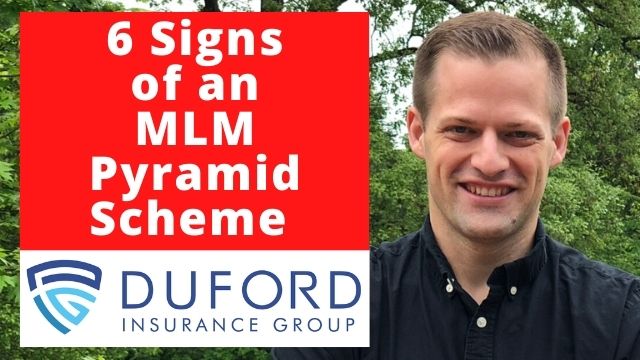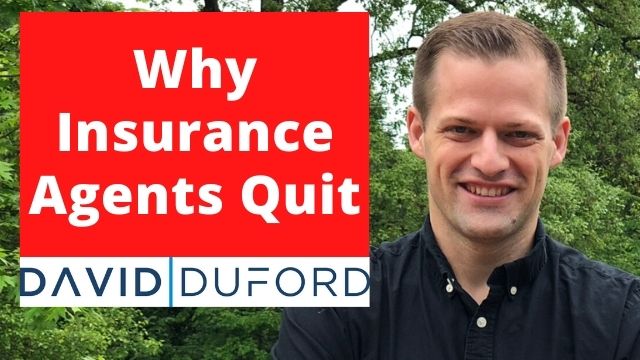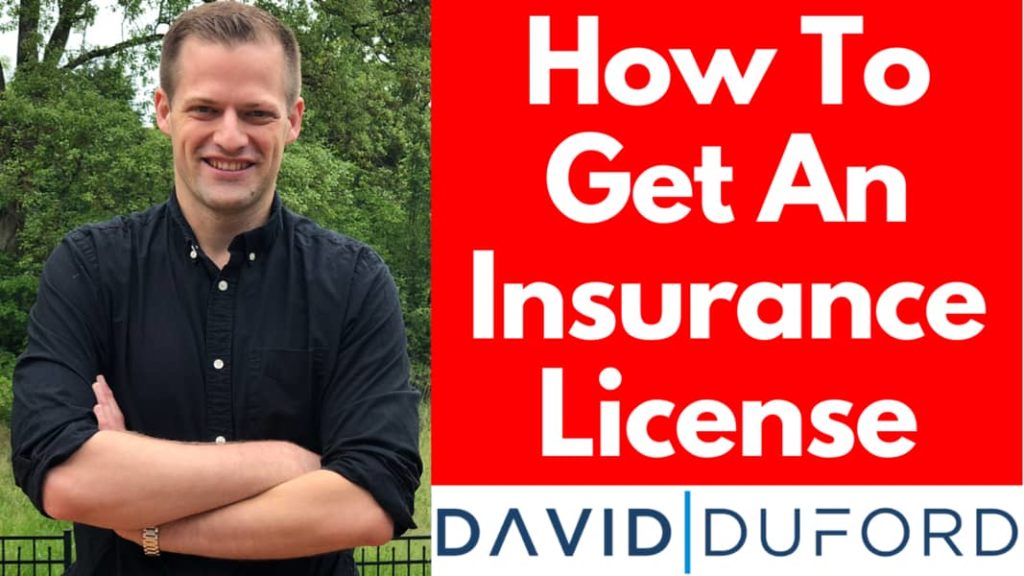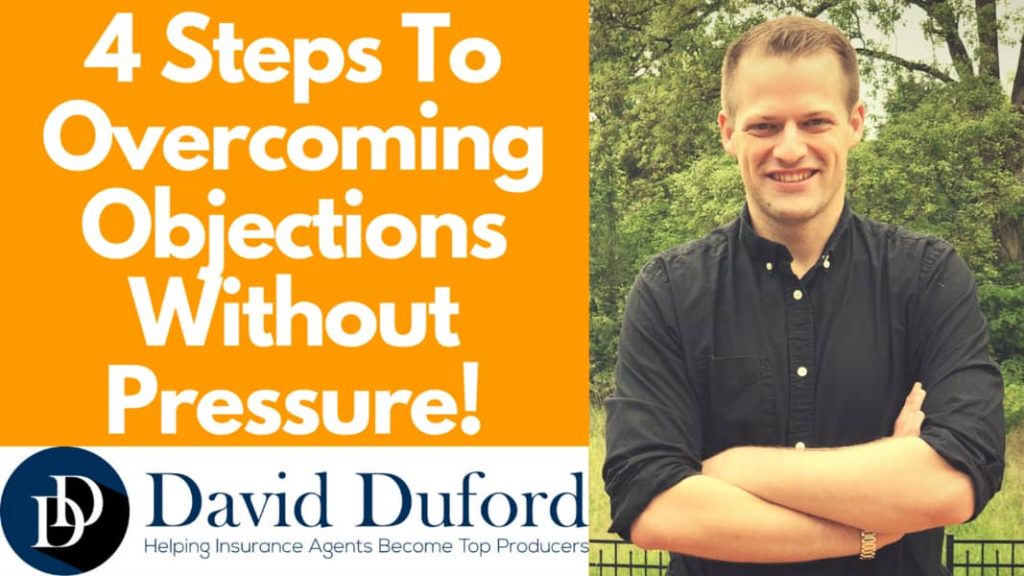Have you ever wondered as a new sales person how to overcome objections without high-pressure tactics?
Over the course of my career in the life insurance sales business, I have done over 3,000 face-to-face presentations and have recruited more than 1,000 insurance agents to my agency. And through trial and error, I’ve learned the techniques to deal with objections from prospects that builds the urgency to buy TODAY… WITHOUT guilt-tripping or high-pressure.
In fact, I have discovered there is a nuanced way of handling objections that actually elevates your status in your prospect’s mind. This strategy is atypical of what is taught as objection handling advice.
Rather, my way of rebuttaling is a real way to converse with your prospects to get them to believe you and inevitably buy… TODAY.
There are 4 specific strategies I’m going to share that will do just that. Let’s jump right in!
#1 – Overcome Objections Early On
This first strategy is big!
My Dad, who sold his 250+ employee chemical sales business to EcoLab when he was 49, taught me this fundamental truism about selling:
“All a sales presentation is about is overcoming objections.”
My Dad =)
Elaborating further, Dad’s advice was to create a sales presentation around all the objections a prospect could possibly use, and come up with a presentation that AUTOMATICALLY overcomes them… BEFORE they are materialized in the mind!
Bottom line, design your sales presentation to purposely address the most common objections your prospects give to buying.
How do you do that?
Instead of hiding from possible objections, bring them to the forefront early on in your sales call. List the top 3 to 5 sales objections you experience, and insert pre-qualifying questions related to those objections in the initial stages of the presentation.
I recommend having a handful of relevant stories or case studies of current clients who have expressed similar objections, and explain to them why they bought anyway, and how they are ultimately WAY happier that they did.
Stories and case studies are powerful in gaining confidence and urgency to buy from your prospect. Remember, if parables (stories) worked well for Jesus Christ, it’ll probably work well for you, too =).
Bottom line, addressing your prospect’s concerns early helps gain motivation to buy from your prospect, and has the added benefit of saving your time for a qualified prospect, as prospects who you cannot overcome the objection early on is simply a suspect, and unlikely to buy.
#2 – Ask Open-Ended, Fact-Finding Questions
Asking open-ended, fact-finding questions uncovers what makes the prospect tick. Before I get into specifics about my product, I want to know what matters to my prospect, and there’s no better way than asking open-ended questions to discover that.
An open-ended question non-binary question. In other words, the answer to your question will not illicit a “yes-no” response. Rather, open-ended questions are worded to allow the prospect to provide detail, context, and emotion to whatever you asked him.
For example…
“How are you feeling today?” and “What are your thoughts and/or concerns when it comes to life insurance?”
These are good examples of open-ended questions. They allow your prospect to express their thoughts related to your product, and even uncovers feelings or concerns they had they were unaware of. Ultimately, this strategy gives you a more-detailed and realistic perspective on what may motivate your prospect to buy from you.
And what’s super-cool about asking open-ended questions is that it allows you to tailor your sales pitch specifically to what matters to the client. You don’t have to guess what benefits matter most since you’ve already asked them as much.
What happens if you skip asking open-ended questions altogether?
All you’d have is a static, canned presentation that could possibly be tone-deaf to what your prospect really wants. It’s likely you’ll miss out on sales opportunities, too.
#3 – Eliminate Remaining Objections
After you’ve taken time to ask open-ended questions and tailored your presentation to eliminate as many objections as possible, does that mean you’ll eliminate ALL objections?
No!
Even with a well-primed sales presentation, some objections will slip through the cracks. And you have to have a strategy to overcome them as quickly as possible.
PlayUZU Casino: Innovaciones en juegos de azar online
El mundo de los juegos de azar online ha experimentado una revolución en los últimos años, gracias a la innovación tecnológica que ha llevado a la creación de plataformas más accesibles y emocionantes. En este artículo, exploraremos las innovaciones en juegos de azar online y nos centraremos en PlayUZU Casino, una de las plataformas más destacadas en este ámbito.
Desde la comodidad de nuestros hogares, ahora podemos disfrutar de la emoción de los juegos de azar sin tener que visitar un casino físico. PlayUZU Casino ha revolucionado la industria al ofrecer una experiencia de juego única y transparente. ¿Te imaginas jugar tus juegos de casino favoritos sin tener que preocuparte por los requisitos de apuesta o los límites de ganancias? En PlayUZU Casino, todos los giros son justos y transparentes, sin condiciones ocultas. ¿Quieres descubrir cómo esta plataforma está cambiando el juego online? ¡Sigue leyendo para descubrirlo!
La evolución de los juegos de azar en línea: PlayUZU Casino
PlayUZU Casino es un sitio web innovador que ofrece una experiencia única en juegos de azar online. Con una amplia variedad de juegos emocionantes y una interfaz fácil de usar, PlayUZU se destaca entre otros casinos en línea. La plataforma ofrece a los jugadores la oportunidad de disfrutar de juegos clásicos como tragamonedas, ruleta y blackjack, así como de emocionantes juegos de jackpot y torneos. Además, PlayUZU se diferencia por su enfoque en la transparencia y la honestidad, ya que no tiene requisitos de apuestas ni términos y condiciones ocultos.
Una de las principales innovaciones de PlayUZU es su programa de recompensas exclusivo. Los jugadores pueden disfrutar de un sistema de recompensas justo y transparente, donde cada apuesta realizada se traduce en dinero real. Esto significa que los jugadores pueden retirar sus ganancias en cualquier momento, sin restricciones ni condiciones complicadas. Además, PlayUZU ofrece un generoso programa de bonificaciones y promociones, brindando a los jugadores aún más oportunidades de ganar.
Otra característica destacada de PlayUZU es su enfoque en la diversión y la emoción. El casino ofrece una amplia gama de juegos coloridos y entretenidos, con gráficos de alta calidad y efectos de sonido envolventes. Los jugadores pueden disfrutar de la emoción de jugar en un casino real desde la comodidad de su hogar, gracias a la tecnología de transmisión en vivo. PlayUZU también ofrece una experiencia móvil optimizada, lo que significa que los jugadores pueden disfrutar de sus juegos favoritos en cualquier momento y en cualquier lugar. En resumen, PlayUZU Casino ofrece una experiencia de juego online innovadora y emocionante, con juegos de azar justos, recompensas generosas y una interfaz de usuario intuitiva.
Características innovadoras de PlayUZU Casino para una experiencia de juego única
PlayUZU Casino es un innovador casino en línea que ofrece una experiencia de juego de azar única y emocionante. Con una amplia selección de juegos, PlayUZU Casino se destaca por su enfoque en la transparencia y la honestidad. A diferencia de otros casinos en línea, PlayUZU no tiene requisitos de apuesta, lo que significa que los jugadores pueden retirar sus ganancias en cualquier momento sin restricciones.
Una de las principales innovaciones de PlayUZU Casino es su sistema de recompensas. Los jugadores pueden disfrutar del programa de lealtad “OJOplus”, que les ofrece dinero real cada vez que juegan. Además, PlayUZU Casino ofrece un generoso programa de bonos y promociones, que incluye giros gratis, bonos de depósito y premios en efectivo. Estas recompensas adicionales brindan a los jugadores más oportunidades de ganar y maximizar su experiencia de juego.
Otra característica destacada de PlayUZU Casino es su enfoque en la seguridad y la protección del jugador. El casino en línea utiliza tecnología de encriptación de última generación para garantizar que todas las transacciones y datos personales estén seguros. Además, PlayUZU Casino cuenta con licencia y regulación de las autoridades de juego de Malta y el Reino Unido, lo que brinda a los jugadores la tranquilidad de saber que están jugando en un entorno seguro y confiable.
La transparencia y confianza en los juegos de azar en línea: el enfoque de PlayUZU Casino
PlayUZU Casino es un innovador casino en línea que ofrece una experiencia de juego única y emocionante. Con una amplia selección de juegos de azar, PlayUZU Casino se destaca por su enfoque en la transparencia y la honestidad. A diferencia de otros casinos en línea, PlayUZU Casino no tiene requisitos de apuesta y no aplica comisiones ocultas. Esto significa que los jugadores pueden disfrutar de sus ganancias de inmediato, sin complicaciones ni sorpresas desagradables.
Una de las principales innovaciones de PlayUZU Casino es su programa de recompensas, que ofrece a los jugadores la oportunidad de ganar dinero real mientras juegan. Cada apuesta realizada en el casino contribuye a un bote de dinero que se otorga a los jugadores de manera aleatoria. Además, PlayUZU Casino cuenta con un sistema de “giro de la rueda de la fortuna”, donde los jugadores pueden ganar bonificaciones adicionales, como tiradas gratis o dinero en efectivo. Estas características únicas hacen que jugar en PlayUZU Casino sea emocionante y gratificante.
Otra característica destacada de PlayUZU Casino es su enfoque en la seguridad y la protección de los jugadores. El casino utiliza tecnología de encriptación de vanguardia para garantizar que todas las transacciones y datos personales estén protegidos. Además, PlayUZU Casino promueve el juego responsable y ofrece herramientas para que los jugadores controlen y limiten su actividad de juego. Con su combinación de juegos emocionantes, recompensas generosas y altos estándares de seguridad, PlayUZU Casino se ha convertido en una opción popular para los amantes de los juegos de azar en línea.
PlayUZU Casino: una amplia variedad de juegos emocionantes y divertidos
PlayUZU Casino es una plataforma innovadora en el mundo de los juegos de azar online. Con una amplia variedad de juegos emocionantes y una interfaz fácil de usar, PlayUZU ofrece una experiencia de juego única. Lo que distingue a este casino de otros es su enfoque en la transparencia y la honestidad. No hay requisitos de apuestas ocultos ni trucos engañosos. Los jugadores pueden disfrutar de una experiencia justa y transparente en cada juego.
Además, PlayUZU Casino ofrece una amplia gama de juegos para satisfacer todos los gustos. Desde tragamonedas clásicas hasta juegos de mesa como el blackjack y la ruleta, hay algo para todos. También cuenta con juegos en vivo, donde los jugadores pueden interactuar con crupieres reales y disfrutar de la emoción de un casino físico desde la comodidad de su hogar. Con bonos y promociones regulares, PlayUZU Casino se enorgullece de recompensar a sus jugadores leales. Únete a PlayUZU Casino hoy y descubre la emoción de los juegos de azar online de una manera justa y transparente.
Beneficios y promociones exclusivas de PlayUZU Casino para sus jugadores leales
PlayUZU Casino es un casino en línea que se destaca por sus innovaciones en juegos de azar. Una de las principales características que lo diferencia de otros casinos es su enfoque en la transparencia y la honestidad. En PlayUZU, los jugadores pueden disfrutar de una experiencia de juego justa y sin trucos, ya que no hay requisitos de apuesta ni condiciones ocultas. Esto significa que los jugadores pueden retirar sus ganancias en cualquier momento sin restricciones. Además, PlayUZU ofrece una amplia selección de juegos de azar emocionantes, incluyendo tragamonedas, juegos de mesa y juegos en vivo, todos ellos desarrollados por los principales proveedores de software del sector.
Otra innovación destacada de PlayUZU Casino es su programa de recompensas. A diferencia de otros casinos en línea, en PlayUZU los jugadores pueden obtener recompensas instantáneas y en efectivo por cada apuesta que realicen, sin importar si ganan o pierden. Estas recompensas se depositan directamente en la cuenta del jugador y pueden ser retiradas sin restricciones. Además, PlayUZU brinda a los jugadores la oportunidad de participar en torneos y promociones especiales, donde tienen la posibilidad de ganar premios en efectivo adicionales. Con su enfoque innovador y transparente, PlayUZU Casino se posiciona como una opción atractiva para los amantes de los juegos de azar en línea.
En conclusión, PlayUZU Casino se destaca como una opción innovadora y emocionante en el mundo de los juegos de azar online. Su enfoque en la transparencia, la diversión y la ausencia de requisitos de apuesta ha revolucionado la industria, ofreciendo a los jugadores una experiencia única. Con una amplia selección de juegos de alta calidad y promociones generosas, PlayUZU Casino se ha ganado rápidamente una reputación como uno de los principales casinos en línea. Además, su programa de recompensas y atención al cliente excepcional demuestran su compromiso con la satisfacción del jugador. Si buscas una experiencia de juego en línea emocionante y justa, PlayUZU Casino es definitivamente la elección perfecta.
Here’s my fool-proof way to handle objections without pressure.
When I hear an objection like,
“Let me think about it,”
…my answer is,
“Okay that’s fine, Mr. Jones. I appreciate you saying that. But when you say, ‘I need to think about it’, what do you mean exactly?”
First, let’s talk about tonality. Do NOT sound annoyed or flustered when you say this. Instead, answer in a reflective, empathetic tone. Practice and rehearse this tone of voice, just as much as you rehearse your script.
Second, why do I say this specific script? First, “let me think about it” is not a real reason not to buy. It is a stalling tactic, and there is more substance to not buying if you investigate further.
By asking an open-ended question (there it is again =) in response to their objection, I am encouraging them to further explain why they want to wait and think things through. Your prospect’s elaboration will give you substantive clues as to what the REAL objection is, and an opportunity to overcome it.
Here’s what this whole scenario would sound like scripted.
When the prospect answers your rebuttal with whatever reason (the reason doesn’t matter), I’ll say:
“I see, and I TOTALLY understand where you’re coming from. So besides that, is there ANYTHING else you’re concerned about that is causing you NOT to move forward today with starting this program/getting you started?”
If the prospect says, “No,” then reply by giving them a conditional buying question:
“if we can fix this issue now, can we do business today?”
This conditional question allows you to qualify the client to determine if they are committed to proceeding with you if you can help them fix their concern.
It’s a “line in the sand” technique, almost an ultimatum. This is very useful if you’re an extremely busy salesperson with many prospects to serve. It helps reserve your time for most qualified prospects through eliminating wasted time with unqualified suspects.
If they say prospect objects to buying today, then them “Why is that?” and go through the same process again.
Why do I teach this objection-handling strategy?
This script helps isolate the cause of buyer procrastination, and gives you substantive reasons for procrastinating, which gives you an opportunity to fully rebuttal.
Now here’s the thing. In a perfect world, our prospects are forthcoming and honest. If you’ve sold anything, you know this isn’t always the case. Some people knowingly withhold the facts and their concerns.
What do you do when the prospect isn’t forthcoming?
Take a chance!
Why? Because we have ONE SHOT in many cases to make a sale, especially for those of us who sell products on one-call presentations. If the person isn’t going to buy TODAY, they may never buy!
In a case where a person isn’t forthcoming, feel free to call them out like this – remember at this point you have NOTHING to lose:
“It sounds like there’s something here you’re not telling me that doesn’t make sense to you. Can you share what you’re concern is? Because look, if this doesn’t make sense for you, that’s fine, I’ll be on my way. But you’re telling me that you need something like this and you’re not buying? It doesn’t make sense. What is the deal?”
If you don’t feel comfortable being blunt, then ask permission to be blunt with this script:
“Do I have permission to tell you the truth about what I’m thinking?”
Most will say “yes,” giving you permission to be brutally honest.
Remember… be-backs WON’T be back. You REALLY have to believe that. If product is designed to be sold on the first call and you’re running into these objections, take chance and call them out. There’s nothing to lose at this point anyway.
At the end of the day, not everybody’s going to buy.
Sad to say, but it’s true =).
While sales and objection-handling training is good, it will only take you so far in your efforts to earn a high income.
What’s equally if not more important is to understand that sales is a numbers game. Some will, some won’t, so what? Next!
#4 – Always Have Too Many Prospects To Sell To
Don’t place all your hope on one singular prospect. Even with good salespeople, statistically we know that many prospects will NOT buy.
So what to do with dealing with non-buyers? Simple. You MUST keep your pipeline FULL!
In fact, your ideal state as a salesperson is to have too MANY prospects to see, so much so that you struggle to stay ahead of schedule.
What I’ve discovered training insurance agents is that successful ones both handle objections well and are booked with a TON of presentations. That way they don’t get bent out of shape if a singular prospect doesn’t buy. Heck, there’s 19 more prospects to see this week – who cares? Next!
Putting your focus more on seeing as many people as possible RATHER than obsessing how to turn non-buyers into buyers is a substantially more lucrative for you as some people just won’t buy even if you do everything right.
The key is this: the more you do things right, the more often they buy. And the way that you do more things right is to SEE MORE PROSPECTS.


January 03, 2023

January 03, 2023

January 03, 2023
